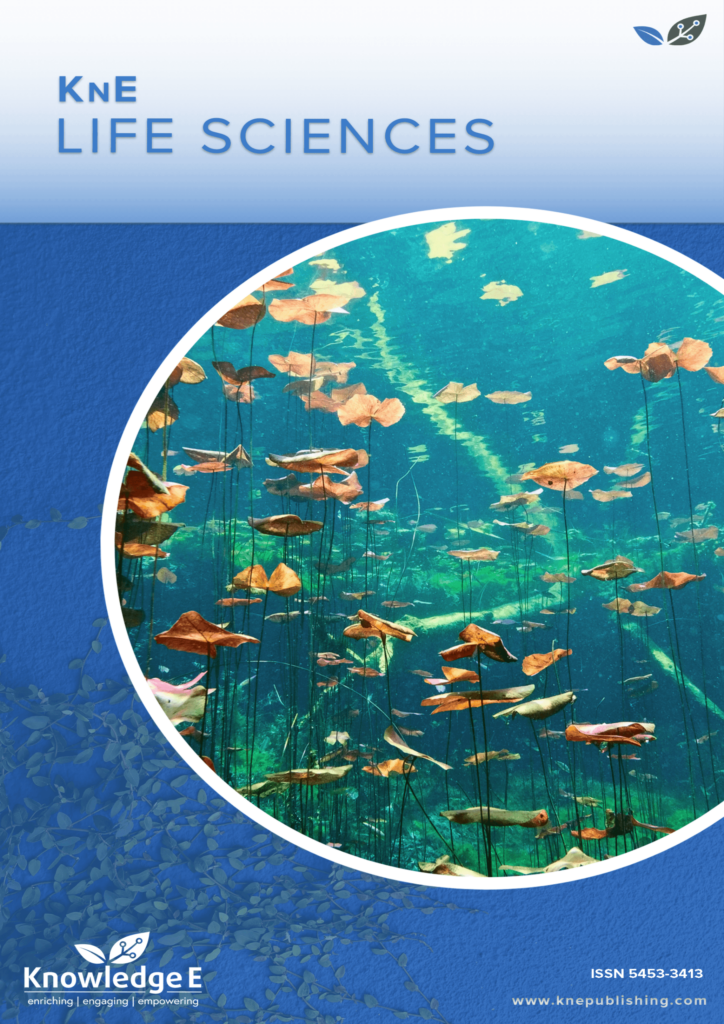
KnE Life Sciences
ISSN: 2413-0877
The latest conference proceedings on life sciences, medicine and pharmacology.
Salt Tolerance of Barak Cenana Rice (Oryza sativa L cv. Barak Cenana) EMS Derived M1 Putative Mutants
Published date:Feb 11 2020
Journal Title: KnE Life Sciences
Issue title: The 2019 International Conference on Biotechnology and Life Sciences (IC-BIOLIS)
Authors:
Abstract:
Barak Cenana (Oryza sativa L cv. Barak Cenana) is a native red rice cultivar of Tabanan regency, Bali. We have previously created first-generation putative mutants (M1) lines of Barak Cenana using EMS. In this study, we aim to evaluate M1 lines tolerance to salt stress. Three-leaf seedlings of WT Barak Cenana and M1 lines were cultured in hydroponic system containing Yoshida solution and 100 mM NaCl for 7 days. The salt tolerance level of each seedling was evaluated using SES standard and the survived seedlings were transferred into the pot-containing soil growth for maturation. All WT were died when treated with 100 mM NaCl for 7 days. In contrast, some M1 lines were survived where 0.5% were highly tolerance (II2A-4) and 4.06% (1F-4, 1F-3, II2A-8, IID-1, IID-4, IID-6 and 1B-6) were tolerance to salt stress. This variation of salt tolerance level among M1 lines is likely due to the random mutation caused by EMS. Furthermore, all survived mutants were fertile and able to produce mature seeds. As characters in M1 generation are not stable, future studies are required to establish stable mutant lines.
Keywords: Rice, EMS, Mutants, Barak Cenana, salt tolerance
References:
[1] Subdirektorat Statistik Demografi, 2018. The projection of Indonesia population 2015-2045. BPS, Jakarta; pp 27-42
[2] Yunarti, R. A. and Afsari, M. D., 2016. Profil komuditas barang kebutuhan pokok dan barang penting komoditas beras. SP2PK, Jakarta; pp 23-26
[3] Zeng, L., Shannon, M. C. and Lesch, S. M., 2001. Timing of Salinity affects rice growth and yield component. Agriculture Water Management, 48: 191-206
[4] Hussain, S., Zhang, J., Zhong, C., Zhu, L., Cao, X., Yu, S., James, A. B, Hu, J. and Jin, Q., 2017. Effects of salt stress on rice growth, development characteristics, and the regulating ways: A review. Journal of Integrative Agriculture, 16(11): 2357–2374
[5] Siringam, K., Juntawong, N., Cha-um, S., Boriboonkaset, T. and Kirdmanee, C., 2012. Salt tolerance enhancement in indica rice (Oryza sativa L. spp. indica) seedlings using exogenous sucrose supplementation. Plant Omic Journal, 5(1):52-59
[6] Amirjani, M. R., 2010. Effect of NaCl on Some Physiological Parameters of Rice. EJBS, 3(1): 06-16
[7] Song, J. Y., Kim, D.S., Lee, M.-C., Lee, K.J., Kim, J.-B., Kim, S.H., Ha, B.-K, Yun S.J. and. Kang S.-Y., 2012. Physiological characterization of gamma-ray induced salt tolerant rice mutants. AJCS 6(3):421-429
[8] Baloch, A. W., Soomro, A. M., Javed, M. A., Bughio, H. R., Alam, M. A., Bughio, M. S., Mohammed, T. and Mastoi, N.N., 2003. Induction of Salt Tolerance in Rice through Mutation Breeding. Asian Journal of Plant Science 2 (3): 237-276
[9] Theerawitaya, C., Triwitayakorn, K., Kirdmanee, C.,Smith,D. R., and Supaibulwatana, K. (2011). Genetic variation associated with salt tolerance detected in mutants of KDML 105 (Oryza sativa L. spp. Indica) rice. Australian journal of crop science, 5 (11): 1475-148
[10] Indrasari, S.D, W. Prihadi, dan E.Y. Purwani, 2010. Evaluasi muti fisik, mutu giling, dan kandungan antosianin kultivar beras merah. Jurnal Penelitian Pertanian Tanaman Pangan 29(1):56-62.
[11] Yoshida, S.I. Forno, D.A., Cock, J.H., Gomez, K.A. 1976. Laboratory manual for physiological studies of rice. Manila (Philippines): International Rice Research Institute.
[12] Gregorio, G. B., Senadhira, D. and Mendoza, R. D., 1997. Screening rice for salinity tolerance. IRRI.
[13] Artadana, I.B.M., Hardjo, P.H. and Ama, S.V., 2016. Pertumbuhan dan Degradasi Klorofil Bibit Padi Barak cenana yang Tercekam Natrium Klorida (NaCl). Prosiding Seminar Nasional Biologi, 40-43.
[14] Pospíšilová, J., Tichá, I., Kadleček, P., Haisel, D. and Plzáková, Š., 1999. Acclimatization of micropropagated plants to ex vitro conditions. Biologia Plantarum, 42 (4): 481-497
[15] Lee, I. S., Kim, D. S., Lee, S. J., Song, Lim, Y. P. and Lee, L. H., 2003. Selection and Characterization of radiation-induced Salinity-tolerant Line in Rice. Breeding Science 53: 313-318
[16] Reddy, I. N. B. L., Kim, B.-K., Yoon, I.-S., Kim, K. –H. and Kwon, T. –R., 2017. Salt Tolerance in Rice: Focus on Mechanisms and Approaches. Rice Science, 24(3): 123-144
[17] Oladosu, Y., Rafii, M. Y., Abdullah, N., Hussin, G., Ramli, A., Rahim, H. A., Miah, G. and Usman, M., 2016. Principle and application of plant mutagenesis in crop improvement: a review. Biotechnology & Biotechnological Equipment, 30 (1): 1-16
[18] FAO/IAEA, 2018. Manual on Mutation Breeding - Third edition. Food and Agriculture Organization of the United Nations. Rome, Italy